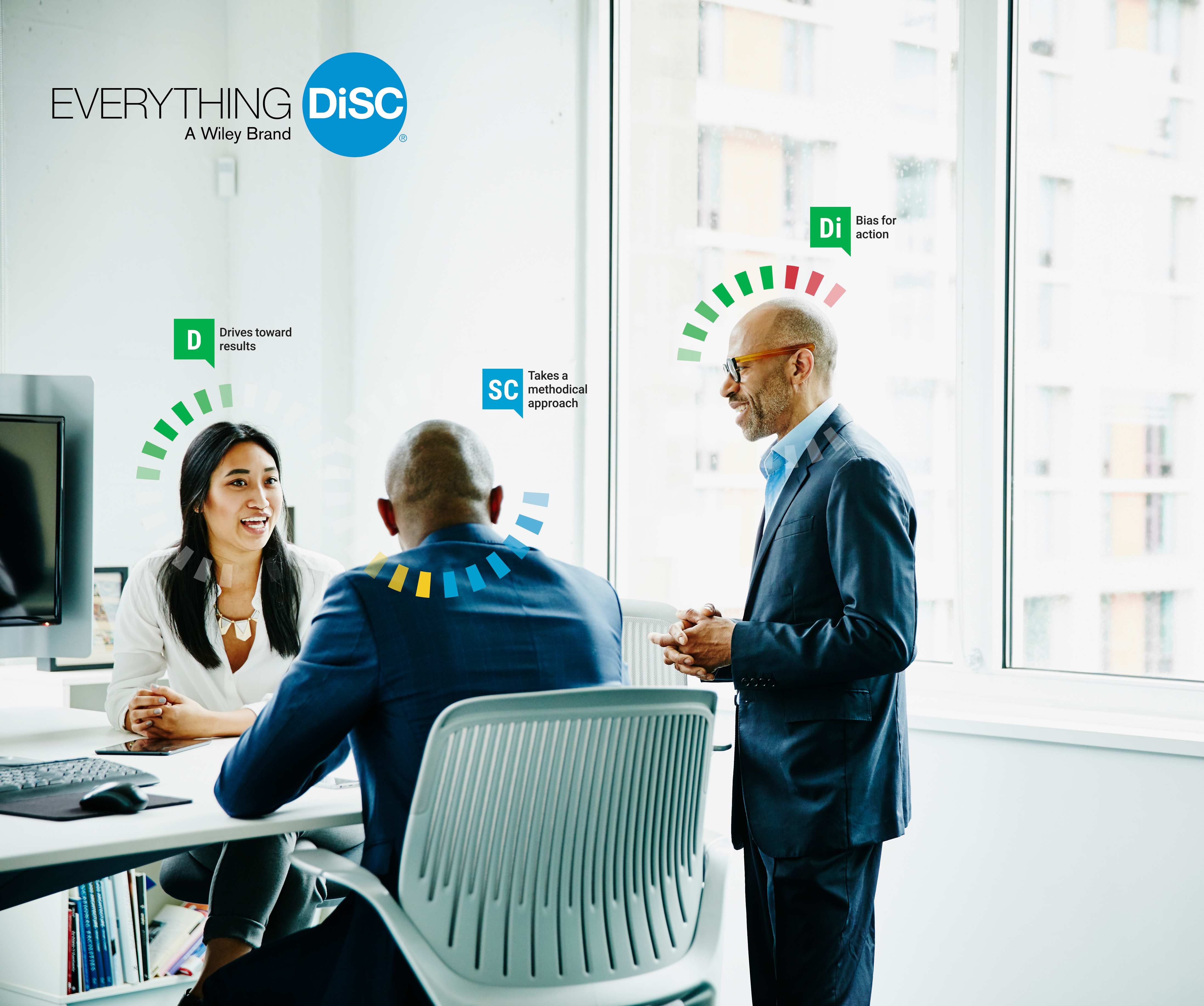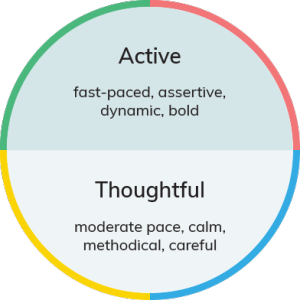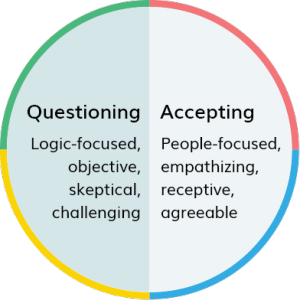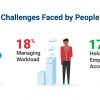EVERY SINGLE ONE OF US STRUGGLES WITH INSECURITY.
In fact, we do it every single day of our lives, even when we don’t realise it. What we recognise even less, however, is just how much this insecurity eats away at our organisational cultures. But if we can help people own their personal quirks and if we can help them extend that same goodwill to their colleagues, we can cultivate a counteragent:
a culture of trust. And luckily, organisations actually can reliably create experiences that bolster this sort of faith. This Blog will explore one time-tested methodology for doing so: personality-based assessments.

DRAINS ON CULTURE
Think about all of the bad habits that are a drain on your company culture, drip by drip by drip.
Let’s see. There’s gossip, territorialism, cliques, cynicism, defensiveness, hiding mistakes, resistance to change, fear of risk, passive-aggressive communication, avoiding feedback, withholding of information, false consensus, pocket vetoes. Of course, this is just a small sample of the joys our workplaces have to offer. But if you look over the list, what’s behind this grab bag of dysfunction? Probably a lot, but there is, in fact, one root cause behind all of them.
Human insecurity.
Not just the passing of self-doubt, but that fundamental conflict each of us has struggled with since the time we had that first sense of self, the core question that takes the basic
shape of, “Am I a good, valuable person?” It’s a question that I’ve helped countless clients work through as a therapist, but the fear it generates has just as much relevance for my work as an organisational psychologist.
In fact, it’s such a raw fear that we usually push it well outside our awareness. It’s just too much to deal with regularly. And if asked the question directly, we give the answer that pop psychology has been training us to give since we were a preteen, “Of course I know I’m a good person!” Any other response means we suffer
from low self-esteem, and that’s an unacceptable sign of weakness—or at the very least, a symptom that we’ve failed to meet those essential developmental milestones that society has set out for us. “Weak” and “fail” being keywords.
 INSECURITY IS THE HUMAN CONDITION
INSECURITY IS THE HUMAN CONDITION
But this mentality, although widely encouraged, is so superficial and out-of-touch, it’s almost as if it was devised by an extra-terrestrial—one who had never had the experience of actually living as a human being. By contrast, the concern over our fundamental value and goodness is one that never goes away. Besides the care for our physical safety, there is nothing we are more instinctually wired to worry about. Insecurity
is the human condition, so much so that if you don’t have any uncertainties rumbling around in your head, you probably have a different, much more severe condition.
And yet, at work we pretend that insecurity is something we should have outgrown, a leftover of adolescence. When we do mention it, we regard it as a character flaw. We treat insecurity as an insult or as a way of dismissing someone.
“Oh, he’s just acting like that because he’s insecure.”
Insecurity is dismissed as a weakness. And the best word I can think to describe this attitude is malignant. Because it causes us to pretend
insecurity is not there. That it shouldn’t be there. To not talk about it. Not acknowledge it.
The universal is treated as an anomaly.
 But is there a single person you know who doesn’t have significant insecurities? If you said yes, it’s probably because you don’t know them that well. Insecurity is not some holdover from adolescence that we weren’t strong enough to deal with when we should have. It is a struggle for even the most enlightened among us. I recall, for instance, developing a program on conflict with my team and interviewing a variety of extremely
But is there a single person you know who doesn’t have significant insecurities? If you said yes, it’s probably because you don’t know them that well. Insecurity is not some holdover from adolescence that we weren’t strong enough to deal with when we should have. It is a struggle for even the most enlightened among us. I recall, for instance, developing a program on conflict with my team and interviewing a variety of extremely
accomplished, sophisticated professionals about their personal experiences with the topic. Specifically, we wanted to know about their internal monologue when they were in the midst of a fight. From the very first interview, it was immediately apparent that the real fight was a battle against these core insecurities. They all described an internal struggle between reason (what the mature, healthy, Oprah-informed part of them knew to be exact) and insecurity (the little insidious voice that questioned their worth and compelled them to defend it by any means
necessary, no matter how destructive in the long- term). And these were self-actualised individuals who had spent decades reflecting on their real motivations and making themselves aware of the unconscious forces that were a drag on
their development.
But this is just a personal issue, right? It doesn’t (or at least shouldn’t) affect how you do your
job. You’ve got to work through your baggage on your own time. Get a therapist, or if can’t afford a therapist, at least get a cat or a fidget spinner.
Except insecurity has everything to do with how we do our jobs. Unless your workplace is a bunch of networked hard drives mining for bitcoins, it’s probably filled with humans. And these humans bring their issues into your workspace every single day. They don’t just bring their current problem—their mother with dementia, their hypercritical spouse, their troubled teenager—they also bring a lifetime of critical experiences (e.g., growing up with an emotionally withholding father, being the target of a rumour on their first job out of school, getting passed over for a promotion they always knew they weren’t good enough for). Both our experiences and our genetics have programed us to worry about our place in the world habitually.
INSECURITY AND THE EROSION OF CULTURE
And a big part of that world is our workplace. So, when there’s a hint that someone might be encroaching on our unique contribution to the organisation, we make sure they don’t have
access to certain information (i.e., territorialism). When someone’s offhanded sarcastic comment makes us think they don’t value what we do,
we disparage them to a coworker (i.e., gossip).
When we worry that we’ll be labelled combative if we don’t agree with the team’s decision, we keep our mouth shut (i.e., false consensus).
Drip by drip by drip, these actions slowly, and usually gradually, corrode the machinery of the organisation’s culture—a steady drain on efficiency, communication, transparency, engagement, creativity, and objective decision-
making. And, of course, all of this trickles down to the bottom line, even if that trickle is so slow that it oozes under the radar. For instance, when people don’t share information or ask for help or speak up about problems in meetings, decisions suffer and the bottom line takes a hit. When people feel they’re always being judged or second-guessed or marginalised, tenure suffers, and the bottom line takes a hit. When people fear speaking up with an idea or taking a risk or challenging a lousy solution, innovation suffers, and the bottom line takes a hit. Small, subtle behavioural nudges that build to have a real impact.
The corrosive effects of unmanaged insecurity, however, are so normal, so pervasive that they’re almost invisible. A fish doesn’t know it’s in water. We manage our insecurity and the insecurity of the people around us on a weekly, if not daily basis, most of the time without noticing it. We consider who can’t be left out of a meeting because they might feel slighted. We redo a coworker’s task rather than give them candid feedback. We include an exclamation mark in an email, so the tone comes across as more friendly. We even reorder the recipients of that group email so that certain people won’t feel like an afterthought.
When you prepare to enter the workforce, no one ever tells you just how much of your life is going to be spent managing insecurity and its consequences. If you’re going to be an architect, they tell you about the types of tasks you’ll
be doing. Or if you’re applying to be a claims adjuster, they give you a sense that this is what your day will look like. But no one pulls you aside and says, “Listen, there is going to be an entire layer of your day, pretty much every day, that
will be about managing your and other people’s insecurity. And the more you work with people, the more this is going to be part of your life. In fact, it will be so common that you won’t even notice it.”
Of course, most modern leaders recognise the impact of the interpersonal and even the intrapersonal on their organisation’s success. With each generation of executives, there is
 more acknowledgement of the humanity of their workforce and the need to be mindful of this variable. Even if they don’t know where their attitudes have come from, most managers have come a long way from the pure, impersonal application of Taylorism. There are sincere efforts to ensure a sustainable work-life balance. Team lunches and recognition events acknowledge the employees’ basic need for camaraderie and appreciation. If you work in a tech start-up, maybe you also get a ping-pong table, a trampoline, and a community poodle.
more acknowledgement of the humanity of their workforce and the need to be mindful of this variable. Even if they don’t know where their attitudes have come from, most managers have come a long way from the pure, impersonal application of Taylorism. There are sincere efforts to ensure a sustainable work-life balance. Team lunches and recognition events acknowledge the employees’ basic need for camaraderie and appreciation. If you work in a tech start-up, maybe you also get a ping-pong table, a trampoline, and a community poodle.
And this stuff is excellent, but the deeper human issues that chip away at our cultures are, of course, very complex and messy. And because they’re messy (and perhaps because they’re perceived as an adolescent), they get ignored. We ignore an issue that is so obvious and ubiquitous that in any other context, the practice would be regarded as negligent.
A MATTER OF TRUST
By analogy, if you have a car, even if you’re like me and you assume cars partially run on magic, you probably do at least know that your oil is eventually going to wear down and deteriorate and that if you don’t address it, it will eventually cause inefficiencies, maybe even a breakdown. Likewise, if you have humans working in your company, insecurity is going to introduce inefficiencies and perhaps also toxins into your organisation. It’s going to gunk up the works
to some meaningful degree. The difference is, we acknowledge that oil is a legitimate
issue that regularly needs to be addressed. No one thinks it’s a good idea, or even an option, to pretend an oil change is not a real concern.
Insecurities, on the other hand, we ignore as either a non-issue, or as a minor nuisance, or, at most, as a naturally occurring condition that we simply have to workaround.
But there is something we can do about it. We can encourage trust. That is, we can take steps to increase the level of trust in our cultures significantly.
For more than 15 years, Patrick Lencioni’s
The Five Dysfunctions of a Team has been on Amazon’s best seller’s list. The foundation of his model for building cohesive, high-functioning teams is trust. And there are multiple methods to do this, but one he and his team have been using consistently for decades is an intense group discussion around personality assessment results. He writes:
“Some of the most effective and lasting tools for building trust on a team are profiles of team members’ behavioural preferences and
personality styles. This help break down barriers by allowing people to better understand and empathise with one another.”
Having worked extensively with one such tool, DiSC®, for the past fifteen years, I want to take a little bit of time here to unpack precisely why this personality-driven approach to trust-building
is so effective at mitigating those ever-present insecurities that, if unchecked, will drip by drip sap our cultures of their vitality.
PERSONALITY-BASED LEARNING EXPERIENCES THAT BUILD TRUST
To provide some context, here’s a quick primer on the Everything DiSC® model. It describes two very fundamental dimensions of human nature. First, some people are more fast-paced and
outspoken, while other people are more cautious and reflective. Second, some people are naturally more sceptical and questioning, whereas other people are more accepting and warm.


After completing a 15-minute assessment, a person receives a report that describes where they fall within the DiSC® model and what that means for their work and their relationships. Of course, the process can end here. The person reads their report and thinks, “This is creepy… have these people been following me around?” They walk away with a deeper understanding of themselves and a crisp framework to organise interpersonal relationships. But in my experience, this person is probably only taking away a fraction of richness that such a tool has to offer. The value that exists in a profile like this most fully comes to life when a person experiences their results in a classroom context.
So why is the classroom so valuable? Let me compare it to another intervention that hopes to inspire change in the individual—therapy. One of the classic approaches to therapy involves creating what is called a corrective emotional experience. That is, unlearning an emotional
lesson is almost impossible to do purely through reflection and insight. And so the strategy is to create an environment with the therapist that is healthy so that the person can be vulnerable. Instead, of the anticipated negative occurrence the person emotionally expects, the person has a positive experience. Slowly, by doing this over and over again, the emotional brain rewrites
the rules of the world, the rules that govern relationships. As a result, they’re able to grow.
The experience a person has in the classroom is less intense of a version of this process. To be clear, it’s not therapy. Still, it does create an event where a person can learn not just intellectually, but also emotionally that it’s alright to be vulnerable around these people they work with.
For instance, imagine a very private, analytical database administrator. In the session, she gets a chance to share with her colleagues some of the ways that she fears that she’s misunderstood—that there’s a difference between being reserved and being cold, that she likes being asked to go out for lunch even if she doesn’t initiate, that her matter-of-fact delivery doesn’t mean she assumes she knows
best. Not only does she get a chance to express, but she also gets to see other people listening and processing what she’s saying, the kind of things we rarely have a non-awkward opportunity
to say in our daily work. And just as compelling is hearing other people describe what they appreciate so much about her contributions— she follows through, she can be counted on for an unbiased opinion, she projects calm when things are frantic. It’s by hearing other people
talk about their appreciation of her style that she internalises the message, “I am valued here.”
It’s by witnessing other people talk about the struggles they also have with their style that she internalises the message, “I’m not alone in my insecurity.” It’s by experiencing, firsthand, how
the different styles need each other to succeed that she internalises the message, “Different doesn’t equal bad.”
The highest value in assessments such as Everything DiSC® is not getting an accurate description of your personality, or even getting personalised tips on how you can grow (although these things are dominant). Still, the real magic is the insights and “aha” moments that happen in the classroom and get carried forward onto the job.
The consumer insights department at Wiley, the publisher of Everything DiSC®, does a great deal of research into the participant experience, both quantitative and qualitative. Interviewing people after the fact, when we ask, “what was the most valuable thing that came out of the training?”
they describe a fundamental shift in how they view their colleagues. It is people seeing each other as three-dimensional human beings with very understandable flaws and quirks—flaws and quirks that sometimes impacted the way they worked. Flaws and quirks that they could now accept with much greater depth, partially because they knew they themselves would also be the recipients of such grace.
These experiences create a space for people to be vulnerable with each other. And for some of these people, it might be a first time in their
adult working lives that they’ve had a space like this. For a smaller subset, it might be the first time they’ve ever had access to an area like this. It’s where people can grow not only through
cerebral or cognitive means but by speaking to their instincts, where slowly their gut is telling them that maybe it’s okay for me to be flawed around these people. Maybe all that nonsense about criticism just being feedback was more than just a cliché. That they’ll not only survive the feedback, but they’ll be happier for it. That their flaws don’t define them. That maybe I can start to let go of a few of my insecurities with these people, and if not let go, maybe at least loosen my grip a little bit.
And by doing this, we slowly liberate a tremendous amount of energy in the workforce.
And passion. And potential. Assets that had previously been covered up by layers of emotional clutter.
Of course, these experiences don’t just happen if you throw a group of people in a room with their personality profiles. We are attempting to
connect humans on a more human level, and that requires some nuance and finesse. It requires someone who can help guide discussions,
push people to open up and recognise when the language of personality is being misused.
These experts can also help customise the classroom experience to fit the needs of a particular culture. Wiley’s been lucky throughout the decades to partner with thousands of these coaches, consultants, and trainers—not only to hear their insights about what works best in the classroom but also to create events together that can genuinely transform a culture.
Of course, there isn’t just one way to address the hidden, but the ever-present toll that insecurities take on our efficiency and effectiveness whenever two or more humans attempt to work together for any length of time. None of the available solutions are cure-alls, and none of them is effortless, but perhaps that is why they can create such a competitive advantage for an organisation. Because, ultimately, when we help individuals, teams and organisations create a trustworthy environment (that is, an environment that’s worthy of their trust), we free those human beings up to engage and connect more fully, more authentically, to ultimately contribute their hearts, minds and talents to something worthy of their energy.
To arrange a call please click on this link to access my diary to book time that suits us both.






